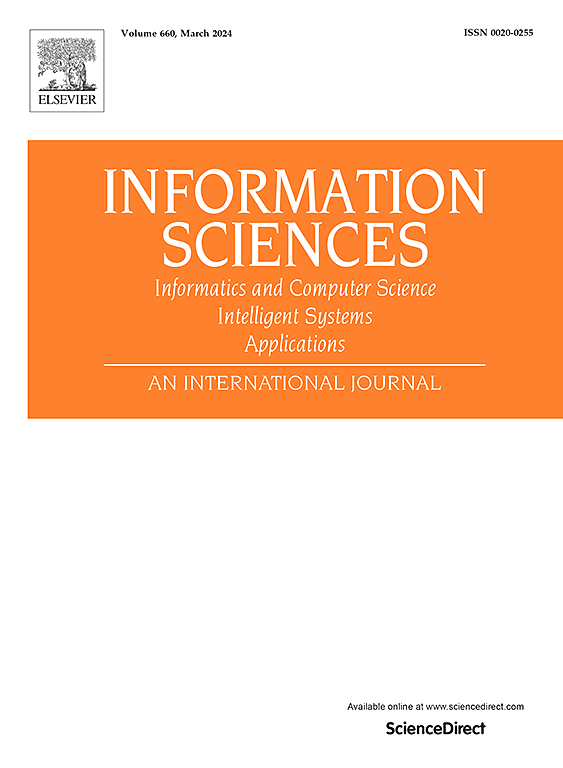CSC-DARTS: Efficient differentiable neural architecture search using channel splitting connections
IF 8.1
1区 计算机科学
0 COMPUTER SCIENCE, INFORMATION SYSTEMS
引用次数: 0
Abstract
Recently, differentiable architecture search (DARTS) has made great progress in decreasing the computational cost of Neural Architecture Search (NAS). However, there is still a problem of excessive memory access costs in training the supernet. In this paper, we propose an efficient search framework for differentiable architecture search using channel splitting connections, namely CSC-DARTS, based on bi-level optimization and second-order gradient approximation. Specifically, a “Channel Splitting” technique is developed to split the feature maps of the supernet at the channel level into two branches, one of which is sent to the operation selection for less redundancy when exploring the search space, while bypassing the rest directly to the output as feature reuse. In addition, an “identity” connection is adopted in both the search and evaluation phases, which is regarded as a regularization for less variability, to bridge a large gap caused by the inconsistency of the architecture depth between the two stages. Experimental results on the benchmark datasets CIFAR-10, CIFAR-100, and ImageNet demonstrate that CSC-DARTS achieves state-of-the-art performance with fewer GPU resources, including a test error of 2.52 % on CIFAR-10, an average test error of 17.25 % on CIFAR-100, and a top-1/5 accuracy of 74.5 %/91.7 % on ImageNet.
使用通道分裂连接的高效可微神经结构搜索
近年来,可微分结构搜索(DARTS)在降低神经结构搜索(NAS)的计算成本方面取得了很大进展。然而,在训练超级网络时,仍然存在内存访问成本过高的问题。本文提出了一种基于双水平优化和二阶梯度近似的基于信道分裂连接的可微架构搜索的高效搜索框架csc - dart。具体来说,提出了一种“通道分割”技术,将超级网络在通道级的特征映射分割成两个分支,其中一个分支在探索搜索空间时发送给操作选择以减少冗余,而将其余分支直接作为特征重用绕过到输出。此外,在搜索和评估阶段都采用了“身份”连接,这被认为是一种较小可变性的正则化,以弥补两个阶段之间由于体系结构深度不一致而造成的巨大差距。在基准数据集CIFAR-10、CIFAR-100和ImageNet上的实验结果表明,cs - darts在较少的GPU资源下实现了最先进的性能,在CIFAR-10上的测试误差为2.52%,在CIFAR-100上的平均测试误差为17.25%,在ImageNet上的前1/5精度为74.5% / 91.7%。
本文章由计算机程序翻译,如有差异,请以英文原文为准。
求助全文
约1分钟内获得全文
求助全文
来源期刊

Information Sciences
工程技术-计算机:信息系统
CiteScore
14.00
自引率
17.30%
发文量
1322
审稿时长
10.4 months
期刊介绍:
Informatics and Computer Science Intelligent Systems Applications is an esteemed international journal that focuses on publishing original and creative research findings in the field of information sciences. We also feature a limited number of timely tutorial and surveying contributions.
Our journal aims to cater to a diverse audience, including researchers, developers, managers, strategic planners, graduate students, and anyone interested in staying up-to-date with cutting-edge research in information science, knowledge engineering, and intelligent systems. While readers are expected to share a common interest in information science, they come from varying backgrounds such as engineering, mathematics, statistics, physics, computer science, cell biology, molecular biology, management science, cognitive science, neurobiology, behavioral sciences, and biochemistry.
 求助内容:
求助内容: 应助结果提醒方式:
应助结果提醒方式:


